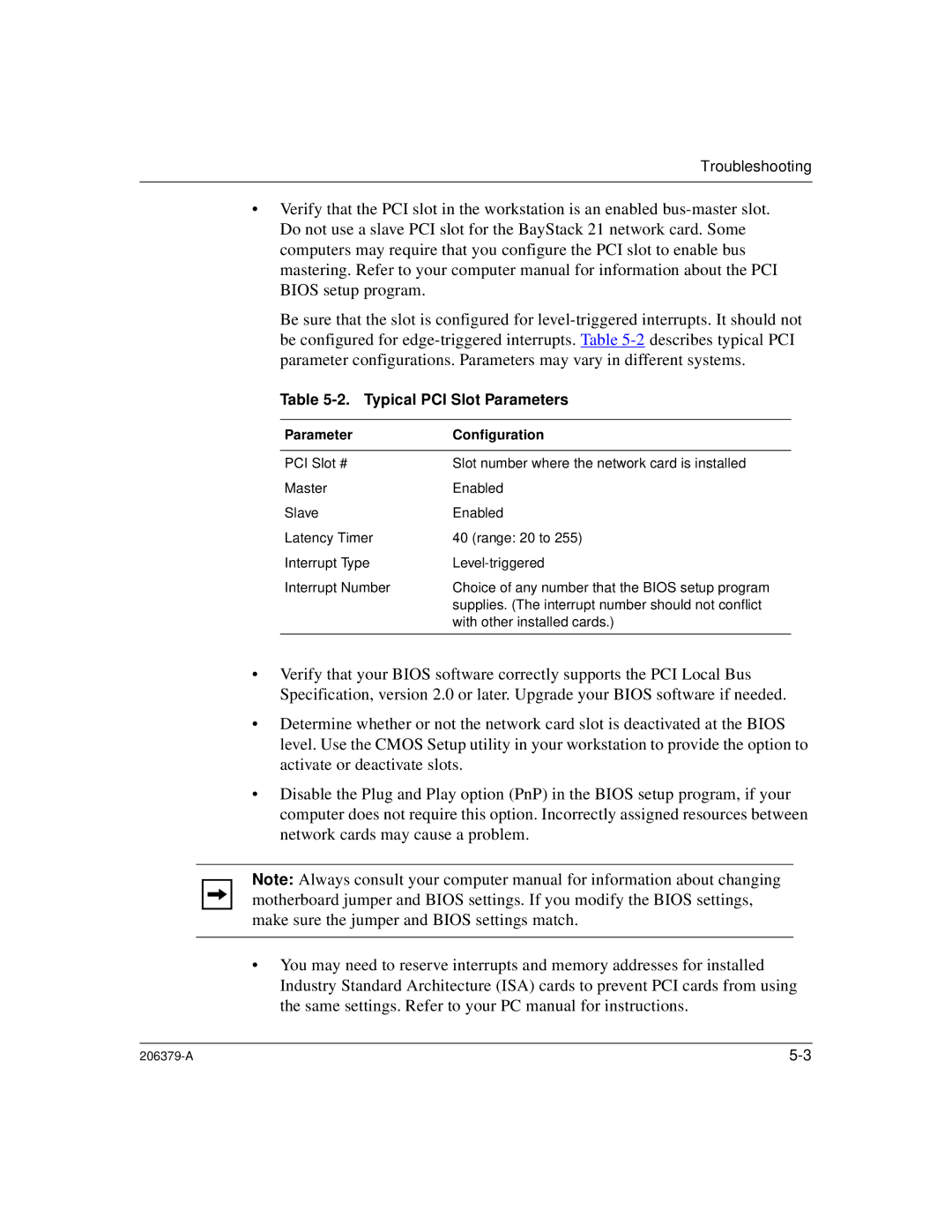
Troubleshooting
•Verify that the PCI slot in the workstation is an enabled
Be sure that the slot is configured for
Table 5-2. Typical PCI Slot Parameters
Parameter | Configuration |
|
|
PCI Slot # | Slot number where the network card is installed |
Master | Enabled |
Slave | Enabled |
Latency Timer | 40 (range: 20 to 255) |
Interrupt Type | |
Interrupt Number | Choice of any number that the BIOS setup program |
| supplies. (The interrupt number should not conflict |
| with other installed cards.) |
|
|
•Verify that your BIOS software correctly supports the PCI Local Bus Specification, version 2.0 or later. Upgrade your BIOS software if needed.
•Determine whether or not the network card slot is deactivated at the BIOS level. Use the CMOS Setup utility in your workstation to provide the option to activate or deactivate slots.
•Disable the Plug and Play option (PnP) in the BIOS setup program, if your computer does not require this option. Incorrectly assigned resources between network cards may cause a problem.
Note: Always consult your computer manual for information about changing motherboard jumper and BIOS settings. If you modify the BIOS settings, make sure the jumper and BIOS settings match.
•You may need to reserve interrupts and memory addresses for installed Industry Standard Architecture (ISA) cards to prevent PCI cards from using the same settings. Refer to your PC manual for instructions.
